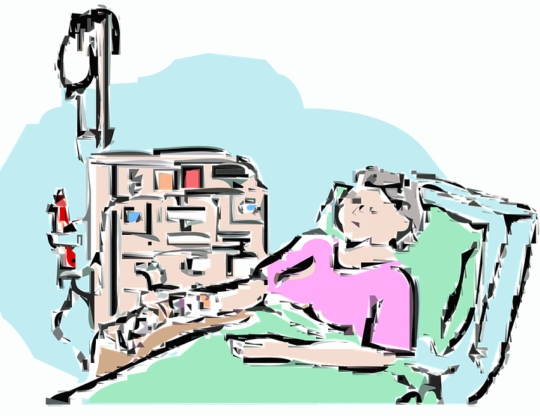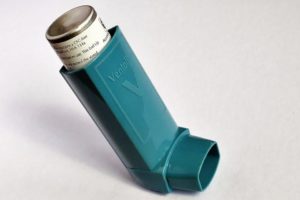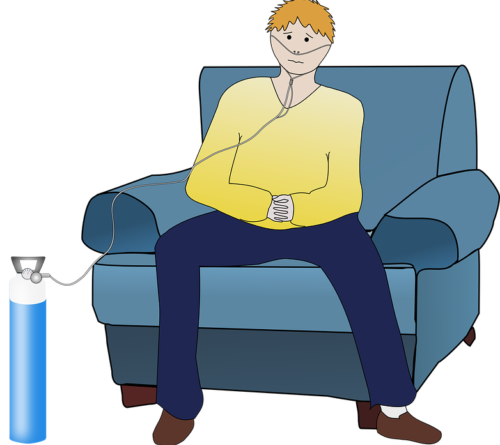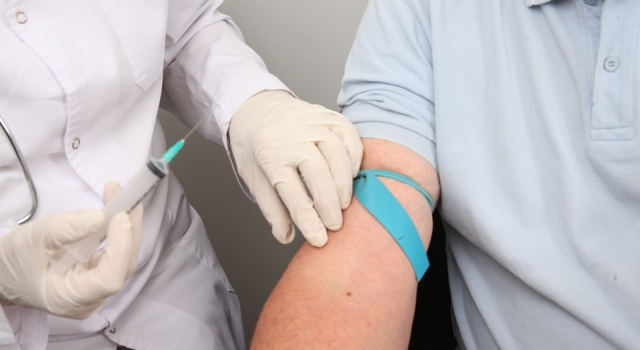Medicine is changing and developing constantly. Many studies published in 2018 may change the lives of millions of people around the world. The world’s leading medical journal, the New England Journal of Medicine, selected 12 studies that could change the face of history in the medical world.
Will you offer us a hand? Every gift, regardless of size, fuels our future.
Your critical contribution enables us to maintain our independence from shareholders or wealthy owners, allowing us to keep up reporting without bias. It means we can continue to make Jewish Business News available to everyone.
You can support us for as little as $1 via PayPal at office@jewishbusinessnews.com.
Thank you.
1. Breast cancer: It is also possible without chemotherapy
The main study presented at the American Society of Oncology Conference and considered one of the most important studies this year proved that at least one-third of breast cancer patients will NOT benefit from chemotherapy and do not need this treatment at all to recover.
The Tailor X study is the largest in the history of breast cancer research. It lasted nine years and included 15,000 patients. The study used the unique capabilities of Oncottet’s Oncotype Breast, which can predict the future risk level of each patient for future spread or recurrence and the benefit of chemotherapy.
Most breast cancer patients have discovered the disease at an early stage and within the framework of their biopsy, they found that their growth is suitable for hormone therapy.
These patients undergo surgery in which the tumor is removed, but for prevention, they also require chemotherapy to destroy microscopic cancer cells and reduce the chances that the disease will recur in the future as metastatic disease.
Oncotype uses tumor tissue taken from the patient’s initial biopsy. It tests 21 different genes and the results are weighted to score, ranging from 0 to 100. The higher the outcome, the higher the risk of recurrence in the future, and chemotherapy should be treated.
On the other hand, when the score is low, the patient can be completely exempt from treatment. The test has become an integral part of the treatment of breast cancer patients and has already helped more than one million patients worldwide. Recently, following this important study, the US National Cancer Authority has determined that Oncotype is the preferred test to be taken before deciding on chemotherapy.
2. Heart events: Treatment of cholesterol that reduces mortality
LDL cholesterol (“bad cholesterol”) is a risk factor for cardiovascular disease and is defined as a global problem with which world health systems deal.
The standard treatment for lowering cholesterol is statins, which in most cases are effective in reducing cholesterol. However, many patients are not balanced despite taking the maximum dose of statins. In others, due to side effects, this treatment is not possible.
Several years ago, injections were developed that succeeded in lowering “stubborn” cholesterol, which did not decrease despite statin therapy.
In the past, they have been shown to allow cholesterol to be lowered to very low values, but it has not been made clear whether the treatment also reduces the central risk to patients – cardiac death.
The main problem is how to prevent the patients’ recurrent heart attacks. While a first heart event usually ends successfully after catheterization, patients are at increased risk of having another incident, usually worse than the previous one, in the years to come.
A new study has shown that patients with high cholesterol levels who cannot be balanced – those defined by doctors as “time bomb” – treated with Praluent injections, a 24 percent reduction in heart attack and stroke mortality, and a 29 percent reduction in all-cause mortality.
3. Asthma: Changing perception in treating patients
Asthma is a common chronic respiratory disease that affects the daily lives of hundreds of millions of children and adults around the world. The disease is characterized by inflammation of the upper respiratory tract. Although most patients have mild asthma, they are still at risk for a severe attack, which can lead to death.
The goal is to maintain constant treatment to prevent exacerbation and to use an additional inhaler “when needed” for specific treatment of breathing difficulties.
However, most asthma patients do not take regular antiretroviral therapy and rely mainly on “emergency” inhalers, known as the Ventolin inhaler, which provides a specific response to breathing problems once they appear, but does not prevent further deterioration.
The study, which was published this year, examined the possibility of using a Symbicort inhaler, which is also prescribed as a “when needed” inhaler, and to examine whether it improves the patient’s condition over time compared with a regular treatment called “Budecort”.
The study included more than 8,000 patients and demonstrated that Symbicort was better at relieving symptoms than the common combination of Budecort with Ventolin. In addition, patients taking Symbicort consumed 75% less steroids than those who used the combination therapy.
4. Cystic fibrosis: A breakthrough in the treatment of most patients
Cystic fibrosis is a serious and life-threatening hereditary disease. The cause of the disease is a defective protein called CFTR. The disease affects many organs, with the most severe injury to the lungs.
Until the 1990s, life expectancy with the disease did not exceed the age of 30. In recent decades there have been a number of breakthroughs that have changed the picture and the life expectancy of the patients has increased, along with the quality of their lives.
The treatment of Symdeko, which treats the molecular mechanism of the disease, has succeeded in improving patients’ quality of life and even life expectancy, but it is suitable for only about half of the patients. This is due to genetic characteristics that vary from patient to patient.
A groundbreaking study published this year examined the effectiveness of combining a new drug called VX659 with Symdeko. The study has shown that the combination is also effective in patients who have not had enough treatment to date. The results of the four-week study showed a dramatic improvement in patients’ lung function.
It is not yet clear whether improvement in lung function will be maintained over time, but the study is considered a milestone mainly because the treatment is suitable for the genetic characteristics of about 90% of patients.
5. Prevention of Heart and Brain Events: End of the Age of Aspirin?
Aspirin is one of the most common drugs in the world for decades. The common therapeutic approach is that, at an older age, taking it daily helps reduce the risk of heart and brain events.
A huge study published this year challenged this notion. It was followed over five years after more than 19,000 participants, all over the age of 70, with no history of stroke, heart events or dementia. The participants in one group took 100 mg aspirin daily, and the other group took a placebo.
Contrary to popular belief, the study has shown that there is no benefit in taking aspirin to prevent cerebral, cardiac, or death events. Moreover, aspirin had a higher rate of bleeding, some of which were life-threatening. 150 years after aspirin was invented and dozens of years after millions of people around the world took it to prevent heart attacks and stroke, the medical community now understands that there is no need to use the drug for someone who is not a heart patient.
It turns out that the best way to prevent heart and brain events in healthy people is to maintain proper nutrition, exercise and avoid smoking.
6. Respiratory distress: Use the ECMO as a last resort
The acute respiratory distress syndrome (ARDS) occurs in about 10% of patients in intensive care units.
It occurs unexpectedly after a serious injury to health due to sepsis, severe infection and more. Without immediate treatment, death rates are very high. This is due to lack of oxygen leading to multi-system collapse. In the ARDS event, the main goal is to restore the oxygen supply to the body and only then to treat it in order to prevent further deterioration. One way to restore oxygen to the body is to use Extracorporeal membrane oxygenation (ECMO) technology, a technology that exists in the large intensive care units in Israel and around the world, which allows oxygen to be supplied to the patient’s blood instead of damaged lungs.
An important study published this year examined whether immediate ARD treatment in patients with acute respiratory distress disorder (ARDS) reduced mortality, compared to conventional measures as the first option, and intervention with ECMO only as a last resort, as “rescue therapy”.
The study, which followed 249 patients with severe respiratory events, found no benefit in immediate attachment to the ECMO machine compared to other treatment modalities and undermined the consensus. However, the importance of using this technology when all the efforts have not been successful is high and remains unchanged.
7. Low bone density: The drug that will prevent fractures from women
Giving one Zoledronic acid to 18 months in six years reduced the risk of fractures in older women with Osteopenia (a disease in which bone density is lower than the normal density but less severe than Osteoporosis).
Zoledronic acid is an intravenous drug. In the past, it has been shown that it can prevent fractures from elderly people suffering from Osteoporosis.
To date, it has not been clear whether this treatment is effective for women with Osteopenia. The study published this year is considered significant because most fractures in postmenopausal occur in these women.
The study involved 2,000 older women with Osteopenia, whose average age was 71. A quarter of the participants in the study had previous crises as a result of the disease. At the end of the study – after six years – 122 women among those who took zoledronic acid had a bone fracture compared with 190 women in the placebo group. In other words, among those taking the treatment, there was a 37% reduction in the risk of fractures.
The researchers concluded that Zoledronic acid resulted in a greater increase in bone mass compared with placebo, and those who took it had a significantly lower risk of having fractures.
8. Laparoscopic hysterectomy: The laparoscopic method is less effective
A hysterectomy is usually performed as a therapeutic act after a woman has been diagnosed with uterine cancer, cervical cancer, ovarian cancer, or cancer of the fallopian tubes. There are currently several types of hysterectomy. One is open resection – in which one incision is made in the lower abdominal wall to enter the pelvic cavity, the uterus is detached from the blood supply and later removed from the body;
And there is also laparoscopic surgery – in which three small incisions are made in the abdominal area, one of the openings is inserted into the camera to allow visualization of the abdominal organs, and the other openings are inserted into a medical device through which the uterus is cut.
In the past decade, laparoscopic surgery has been the preferred choice of gynecologists to treat cervical cancer at an early stage. In these surgeries there is a low risk that the patient will suffer from infection and a faster recovery for patients.
Researchers from the University of Texas have divided a group of 600 patients into two: some have undergone open surgery and some have laparoscopic surgery. According to the study, the disease did not recur within four and a half years in 86% of those who underwent laparoscopic surgery compared to 96.5% of women who underwent open surgery.
In addition, among those who underwent laparoscopic surgery, the survival rate was lower: 93.8% versus 99%. They also had a higher rate of cervical cancer death: 4.4% vs 0.6%. The conclusion was that contrary to what we thought so far, open surgery is preferable.
9. Amyloidosis: The drug that improves the functioning of patients
A study published this year sought to examine the efficacy and safety of Patisiran in patients with ATTR hereditary amyloidosis, a disease characterized by the accumulation of an abnormal protein called amyloid in tissues and organs. This is a hereditary disease, rare and deadly, characterized by severe damage that progresses slowly in the nervous system and other systems in the body. The study included 225 randomized patients. Some received “Patisiran” every three weeks for 18 months, and some received placebo.
The researchers concluded that the treatment of Patisiran led to an improvement in patients’ condition. After nine months and at the end of the study – after 18 months, there was a big difference between the groups. In the end, 56.1% of patients in the Patisiran group had improved nervous function, compared to only 3.9% in the placebo group. Mortality rates were also higher in the placebo group – 7.8% vs 4.7%.
10. Hydrocortisone: There is no reduction in mortality
A study, published this year, is to determine whether intravenous injection of Hydrocortisone, which prevents the release of substances in the body that cause infection, has reduced mortality in patients with a septic shock. A septic shock, also called an “infectious shock,” is a life-threatening condition that occurs when the blood pressure drops following a severe infection that spreads in the blood.
During the study, patients were randomized to those who received 200 mg Hydrocortisone daily and those who received a placebo.
Patients received treatment for seven days or until they were discharged from intensive care. The study was conducted in five different countries between 2017 and 2013 and included 3,800 patients who were suspected of having a septic shock. Of all patients, 1,832 were treated with hydrocortisone and 1,826 received placebo. After three months, the researchers examined how many patients had died (for whatever reason) and how many survived.
RESULTS: 27.9% of patients treated with Hidortortone died, as did 28.8% in the placebo group.
CONCLUSIONS: Although it seems to doctors that the use of Hidecortisone can reduce mortality, in practice, it has no basis in reality.
11. Peanut allergy: The treatment that works
Another study published this year found that a gradual dose of peanuts for children who are allergic to peanuts allows them to eat up to four peanuts without side effects. The study was conducted in the United States and the United Kingdom and included 550 children, half of whom received a capsule containing peanut protein each day, and half received a capsule containing a placebo.
The children in the study began with very low doses of peanuts, which increased every two weeks. The procedure lasted for 20 weeks, ending with 600 mg of peanut protein – the amount containing four peanuts, while the capsule group had mild allergic effects, and the placebo group had severe symptoms.
12. Cerebral palsy: A near-paralyzed nerve transplant
Spastic Hemiplegia is a common form of cerebral palsy, in which the brain injury is expressed in the disability of one side of the body.
A groundbreaking study has described a new way to help people who have been injured on one side of the body by analyzing and transplanting nerves from the normal side of the body on the affected side, in order to stimulate brain activity relevant to the activation of the upper limbs on the paralyzed side. The study involved 36 patients, half of whom underwent the transplant, while the other half underwent rehabilitation therapy only.
The results of the study were described by the New England editors as most exciting. They indicated that the patients treated with the surgery showed a significant improvement in their impaired limb function compared with patients receiving rehabilitation only.
The impressive results have led these researchers to train doctors from around the world to perform similar procedures. However, the results of the study will be examined over time – after examining whether the beneficial effect has been maintained for years in the patients.
Ynet News















